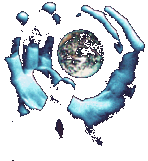 World Fusion Music Links Page
World Fusion Music Links Page
Join World Fusion Music on Facebook
Video Documentary on World Fusion Music
The term world fusion music was coined in 1978 by the leadership of the group Ancient Future to describe the band's unusual blend of musical traditions from around the world.1 In the book, "Ancient Traditions -- Future Possibilities: Rhythmic Training Through the Traditions of Africa, Bali and India," by Matthew Montfort, leader of Ancient Future, Montfort defines world fusion music as "music that combines ideas from many of the earth's traditions."2
World fusion music is a variation of the term world music, which ethnomusicologist Dr. Robert Brown of the Center for World Music has long used to describe traditional music from around the world, including everything from Balinese to Cajun music. Montfort inserted the term fusion so as to distinguish Ancient Future's new sound from the traditional world music it was influenced by.
Of course, musicians have been exchanging knowledge across national boundaries as long as there has been contact between cultures. For instance, Flamenco music is perhaps a product of the cross-cultural exchange that resulted from the Calé people migrating from India to Andalucia. What is new is the conscious decision on the part of some artists to make cross-cultural music in an effort to show how people from different cultures can grow by learning from each other. As this planet becomes more aware of itself as a whole, a growing number of musicians are now experimenting with new combinations of world music styles.
While simply adding electric instruments and pop production to traditional music meets the definition standards and has sold some records recently, the most exciting world fusion music explores the real musical ground between traditions, not just between East and West, but between Chinese and Indian music, or Bolivian and Balinese.
One can look at world fusion music as a process, with different stages. First stage world fusion music is what happens when musicians from different cultures who have no knowledge of each other's traditions try to find common ground. The results are usually mixed: some great moments and some moments of searching.
Second stage world fusion music is the result of musicians studying many types of music for inspiration and knowledge, and then using that knowledge to create their art. This is where Ancient Future started in 1978.
Third stage world fusion music is created by master musicians from many cultures who have for years been learning from each other and have developed a true understanding of each other's traditions. This is where Ancient Future is today. The latest Ancient Future record, ‘Planet Passion’ features third stage world fusion music as well as music based firmly on the world traditions of the master musicians involved. A different ensemble version of Ancient Future is featured on each track in order to showcase the variety of ensemble combinations of the 21 world music masters that perform with the band.
When master musicians from different cultures perform together, there are many benefits. The musicians grow from the exchange, learning techniques and forms that are new to them, making their music richer.
World fusion music has elements familiar to most people as well as elements that are exotic. In this way, it often opens people up to music from cultures other than their own. Out of new music that is living and breathing and fits in with people’s lives today, an appreciation for traditional music can develop.
World fusion music has become a standard term used in the music
industry for this new music. More importantly, it has become a
passion and life's work for many musicians. They find it artistically
stimulating to create music by integrating ideas from more than
one tradition. This site seeks to link up the resources of the
world fusion music movement. You can support the cause by making
a donation on the World Fusion Music Support Page.
1 Stephen Hill, Guide to C.T.I.S. Music, (San Francisco: Hearts of Space Press, 1981), 36.
2 Matthew Montfort, Ancient Traditions--Future Possibilities Rhythmic Training Through the Traditions of Africa, Bali, and India (Kentfield: Ancient Future Music, 1985), 1.
